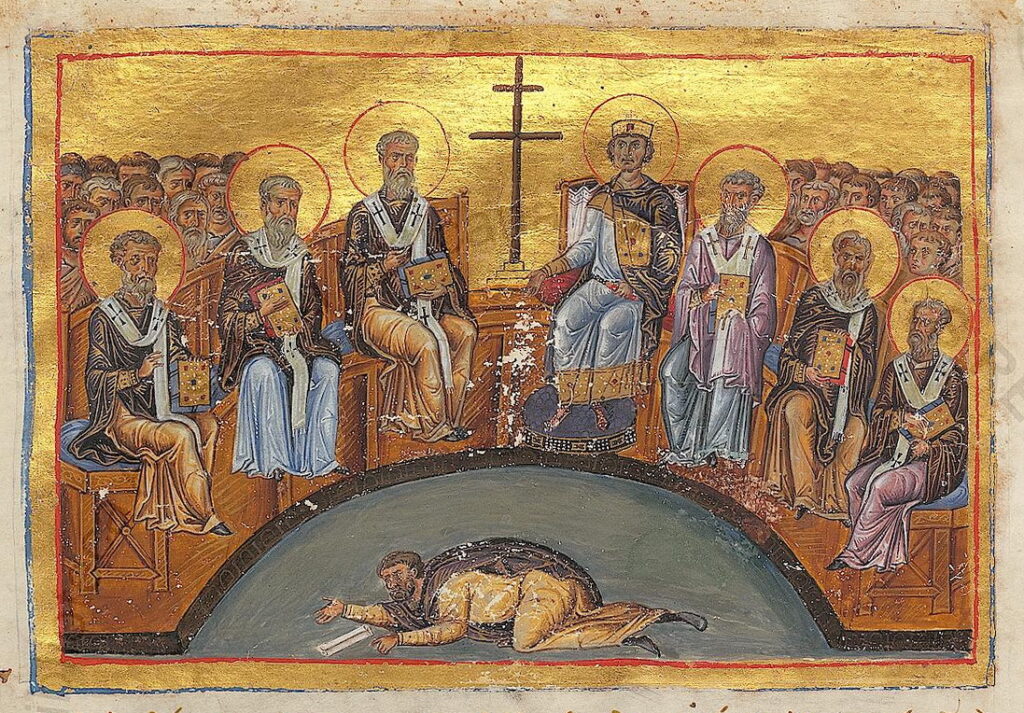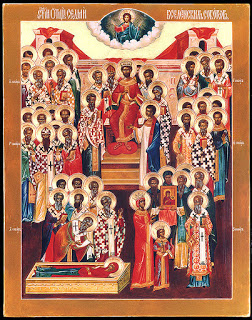The early centuries of Christianity were marked not only by evangelization and growth but also by controversy and confusion. Heresies concerning the nature of Christ, the Holy Trinity, and the Church emerged, threatening to distort the true faith handed down by the Apostles. In response, the Orthodox Church, under the guidance of the Holy Spirit and in collaboration with faithful bishops across the Christian world, convened a series of solemn gatherings known as the Seven Ecumenical Councils.
These Councils—spanning over 450 years—defined and defended the core dogmas of the Orthodox Christian faith, clarifying for all time what the Church has always believed. Here’s a detailed, council-by-council look at these historic gatherings, what they accomplished, and why they still matter today.
1. First Ecumenical Council – Nicea (325 A.D.)
Primary Heresy Addressed: Arianism
Key Doctrine Established: The full divinity of Jesus Christ
Under the leadership of Emperor Constantine the Great, 318 bishops gathered in Nicea to confront the false teachings of Arius, a priest from Alexandria. Arius claimed that Jesus Christ was not eternal and divine but merely the highest created being.
Key Teachings and Outcomes:
Jesus Christ is begotten, not made—eternally God, of one essence (homoousios) with the Father.
The foundational statements of the Nicene Creed were written.
The proper date for the celebration of Pascha (Easter) was established.
Important canons regulating the conduct and roles of bishops, priests, and deacons were established.
Notable Participants:
St. Athanasius (then a deacon), St. Nicholas of Myra, St. Spyridon of Tremithus
2. Second Ecumenical Council – Constantinople (381 A.D.)
Primary Heresy Addressed: Pneumatomachianism (Denial of the divinity of the Holy Spirit)
Key Doctrine Established: The full divinity of the Holy Spirit
Convened by Emperor Theodosius I, this council further expanded the Nicene Creed, reinforcing the Trinitarian understanding of God by emphasizing the personhood and divinity of the Holy Spirit.
Key Teachings and Outcomes:
The Holy Spirit proceeds from the Father and is equal in essence with the Father and the Son.
Additional articles were added to the Creed, affirming belief in:
The Church
Holy Baptism
The Resurrection
Eternal Life
From this point forward, the Creed was known as the Nicene-Constantinopolitan Creed.
Notable Participants:
St. Gregory the Theologian, St. Gregory of Nyssa, St. Cyril of Jerusalem

3. Third Ecumenical Council – Ephesus (431 A.D.)
Primary Heresy Addressed: Nestorianism
Key Doctrine Established: Jesus Christ is one divine Person; the Virgin Mary is Theotokos (God-bearer)
Held under Emperor Theodosius II, this council addressed Nestorius, the Patriarch of Constantinople, who taught that Jesus was two separate persons—one human and one divine—and that Mary gave birth only to the man, not to God.
Key Teachings and Outcomes:
Jesus Christ is one person, fully God and fully man.
Mary is rightly called Theotokos, as she gave birth to the incarnate Son of God.
No additions or alterations to the Nicene Creed are permitted.
4. Fourth Ecumenical Council – Chalcedon (451 A.D.)
Primary Heresy Addressed: Monophysitism
Key Doctrine Established: Christ is one Person in two complete natures—divine and human
Monophysitism, led by Eutyches, taught that Christ had only one nature—His divine nature having absorbed the human. This council, attended by 650 bishops, firmly rejected this view.
Key Teachings and Outcomes:
Christ is perfect God and perfect Man.
His two natures exist “without confusion, without change, without division, and without separation.”
The Chalcedonian Definition remains a cornerstone of Christological orthodoxy.
5. Fifth Ecumenical Council – Constantinople (553 A.D.)
Primary Heresies Addressed: Nestorian and Monophysite writings
Key Doctrine Defended: Full rejection of The Three Chapters—writings tainted by Nestorianism
Under Emperor Justinian I, this council condemned several writings known as The Three Chapters, which had been used to justify heresies.
Key Teachings and Outcomes:
Condemnation of Theodore of Mopsuestia (author of explicit Nestorian texts).
Partial exoneration of Theodoret of Cyrus and Ibas of Edessa (their errors were renounced).
Affirmation of the first four Ecumenical Councils.
Restated the Church’s rejection of both Nestorian and Monophysite heresies.
6. Sixth Ecumenical Council – Constantinople (680 A.D.)
Primary Heresy Addressed: Monothelitism
Key Doctrine Established: Christ has two wills—divine and human
Monothelitism falsely taught that while Christ had two natures, He had only one (divine) will. This undermined Christ’s true humanity.
Key Teachings and Outcomes:
Jesus Christ has two wills, corresponding to His two natures.
His human will is free but always submissive to His divine will.
Heretics—including Pope Honorius of Rome—were anathematized for supporting this error.

The Quinisext Council (691 A.D.) – Also known as the “Council in Trullo”
Although not one of the original seven, the Quinisext Synod is closely associated with the Fifth and Sixth Councils, and it provided crucial canonical guidance.
Key Outcomes:
Ratified 85 Canons of the Holy Apostles and canons from prior councils.
Addressed issues of clerical conduct, liturgical practices, and marriage.
Condemned innovations of the Roman Church, such as:
Clerical celibacy mandates
Saturday fasting during Lent
Non-human portrayals of Christ (e.g., as a lamb)
7. Seventh Ecumenical Council – Nicea (787 A.D.)
Primary Heresy Addressed: Iconoclasm
Key Doctrine Established: Veneration of icons is Orthodox and beneficial to the faithful
Under the patronage of Empress Irene, the Church defended the use of holy icons, which had been violently suppressed for over sixty years by iconoclastic emperors.
Key Teachings and Outcomes:
Icons of Christ, the Theotokos, and the saints are to be honored—not worshiped.
Icon veneration lifts the mind to spiritual realities and is in line with the Incarnation.
The Council affirmed that just as Christ took visible flesh, He can be visibly depicted.
Later, in 843 A.D., the Triumph of Orthodoxy was proclaimed when icon veneration was definitively restored—a feast celebrated annually on the first Sunday of Great Lent.
Conclusion: Why the Seven Ecumenical Councils Still Matter
The Seven Ecumenical Councils are not just historical events—they are milestones of divine truth preserved through struggle, sacrifice, and spiritual conviction. Each Council clarified a central aspect of the Christian faith, ensuring that future generations could know and worship God in truth.
When Orthodox Christians today recite the Creed or venerate an icon, they do so with the assurance that their faith is not new or invented—but firmly rooted in the unchanging truth preserved by the Church through the ages.
So next time you hear the Creed, or see an icon of Christ, give thanks. These truths were hard-won, and they remain at the heart of what it means to be Orthodox.
